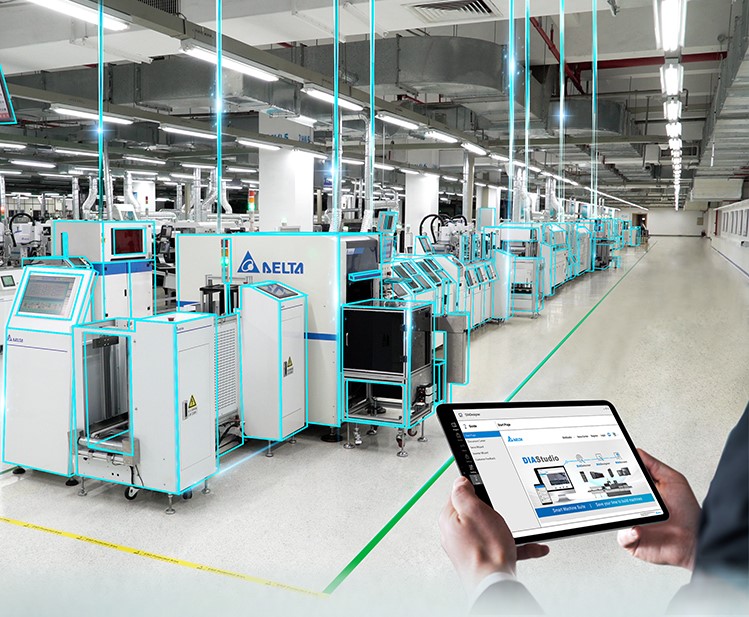Product Search

Recent trade conflicts and the global COVID-19 pandemic presents unprecedented challenges for the manufacturing industry accelerating the need for manufacturing transformation.
Even before this turmoil, the global consumer market was undergoing a massive shift from highly homogeneous mass production to personalised batch production.
So how can Southeast Asian manufacturers leverage smart factory transformation to adapt to the ‘new norms’ in localised work and lifestyle, cater to diverse consumer groups and evolve to match the future labour landscape?
JP Wang, Delta Electronics Chief Technology Officer for Global Smart Manufacturing & Technology, believes crisis often means an opportunity for truly impactful changes. His experiences in transforming Delta’s China production lines were the perfect proving ground for just how much manufacturers can widen the gap between themselves and competitors while building momentum to vault over the next existential crisis.
Creating A Smart Production Line With 70 Per Cent Higher Capacity
As a leading global automation company, Delta implemented digital transformation and smart since in 2015. JP says, “To ensure our products truly meet the needs of customers’ production lines, we installed our original automation products on our production lines to test function and stability before launching them to the market.”

“Early on, we designated two production plants in China to implement smart manufacturing and are now reaping rewards that include a 70 per cent higher production capacity, a three-to-five times increase in productivity per direct labour, and a 35 per cent decrease in the production area of the same capacity,” he said.
JP points out that enterprises should offer employees the opportunity to upgrade themselves throughout the transition, by encouraging them to take on fresh challenges with a willing mindset. He believes the key to Delta’s success lies in meticulous compliance with a six-step transformation roadmap during the early, middle and late stages of smart production line construction.
Six Key Steps To Smart Manufacturing Transformation
Delta’s six key steps to smart manufacturing transformation on production lines include:
1.Rationalisation: Review whether the internal process and the line of flow are optimal. Identify waste, caused by errors or unnecessary actions, and further streamline the process.
2.Standardisation: Rationalise processes and lines of flow as the standard to follow. Integrate automation devices into the smart production line so all procedures follow consistent standards to enhance both capacity and yield rate.
3.Modularisation: Duplicate all standard actions on other production lines to maximise efficiency by leveraging the previously invested resources.
Cyber-physical integration: Integrate OT and IT systems and work for seamless information exchanges between the two systems to generate more value.
4.Automation: Leverage self-detection for errors and transmit information to adjust and ensure target yield rate and capacity. Create modular production lines that re-arrange workstations according to order requirements for rapid line change-over and maximised production efficiency.
5.Digitalisation: Properly organise and analyse the enormous and messy pool of data from exchanges between machines, humans and systems along with specs of raw materials, fixture actions and equipment parameters to enjoy the benefits of automation.
OT And IT Integration Pose An Enormous Challenge For Factory Digitalisation
In the past, Operational Technology (OT) and Information Technology (IT) systems belonged to two separate fields with different domains and system architectures. These two systems have difficulty communicating with each other.
To address this issue, Delta identified the differences in specifications and connection requirements, then set up an internal information standardisation committee to connect the two systems. After a long run-in period, the two smart manufacturing production lines completed a seamless cyber-physical integration for smooth operations that deliver both high capacity and efficiency.
Digital Transformation, Like Rome, Does Not Appear In A Day
Last, JP reminds us that smart manufacturing is always dynamic, and there is never a completion date for continuous improvement. He suggests manufacturers seek external resources and consultation for domain know-how and expertise when creating their own smart manufacturing lines. In future operations, they should review each step’s KPIs from time to time to stay competitive.
Years of dedication to industrial automation field and large-scale factory trial sites have helped Delta build solid experience and a comprehensive understanding of pain points and needs of different manufacturing segments. Before working with a client to create a smart production line, Delta first assesses the customer’s needs and sketches out the most appropriate architecture to cut down on implementation time.
As Southeast Asia embraces the age of smart manufacturing, Delta looks forward to continuing honing the efficiency of its own smart production lines to best assist manufacturing partners in turning this dynamic region into the next global smart manufacturing hub.
Article is also published on Industrial Automation Asia:iaasiaonline